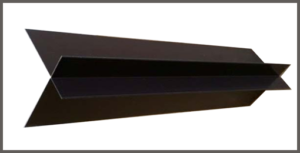- (206) 268-0663
- 7 AM to 4 PM
- sales@nsbmseattle.com
Menu
Anyone remotely associated with construction, In order to make sure that buildings are properly protected against the elements, you will always need to consider metal flashing. Understanding the importance of custom metal flashing in construction will be key in order to ensure the longevity of the building. At New Standard Building Materials, we work hard to develop proper metal flashing regardless of the intended use. We find that a lot of people doing their own flashing tend to confuse two of the leading types of such: l-flashing and z-flashing. Here is a brief breakdown of what each kind of flashing does, what their differences are, and in which cases they should be used.
In construction terms, z-flashing refers to a “Z” shaped piece of metal that provides a transition between two different materials. The particular shape allows the channels to act as a receiver for panels, ridge caps, and headwall flashing. In flashing the transition between the different materials, the pieces assist in preventing water penetration. They do so by purposefully directing the water away from the vulnerable points in the roofing and facilitating its drainage. Since it is custom-made, the channels are fabricated in order to perfectly fit the necessary roofing, as well as the specific angle, size, and profile. Overall, it’s all about properly adjusting the channels to anticipate potential threats to the integral parts of the roofing and the structure.

L-flashing, similarly to its z counterpart, is a versatile type of flashing generally used to uniformly strengthen the finish on a ninety-degree surface. This way, the flashing can protect the structure from moisture infiltration in the vulnerable spots where the walls meet the roof. Like other flashing beams, these are integral components of just about any construction due to their role in protecting the structure against water damage. Should you not implement flashing in these spots between your roof and your wall will be left practically defenseless against damage from the elements, immediately limiting the lifespan and compromising the integrity of the structure.
It’s not going to be a matter of when to use z-flashing vs when to use l-flashing but it’s, instead, going to be about where. It’s all going to depend on the angle of the flashing itself. Angular roofs will require flashing that can adapt to the uneven surfaces, while l-shaped pieces will be best used as flashing in the cases of the right angles where the walls meet the roofs. In the end, each contractor will make their own call at the time of applying metal flashing.
We at New Standard Building Materials are proud suppliers of quality building materials to the Seattle area. In the interest of providing our customers with the best products available, we carefully select our source materials and enforce quality manufacturing throughout the ensuing process. We understand just how important it is to make use of only the best materials at the time of building, so we refuse to ever neglect any stage of the process. For more information on our products or custom quotes for materials, you can always give our team a call at (206) 268-0663. We are here to help you get the l and z-flashing channels for your construction.